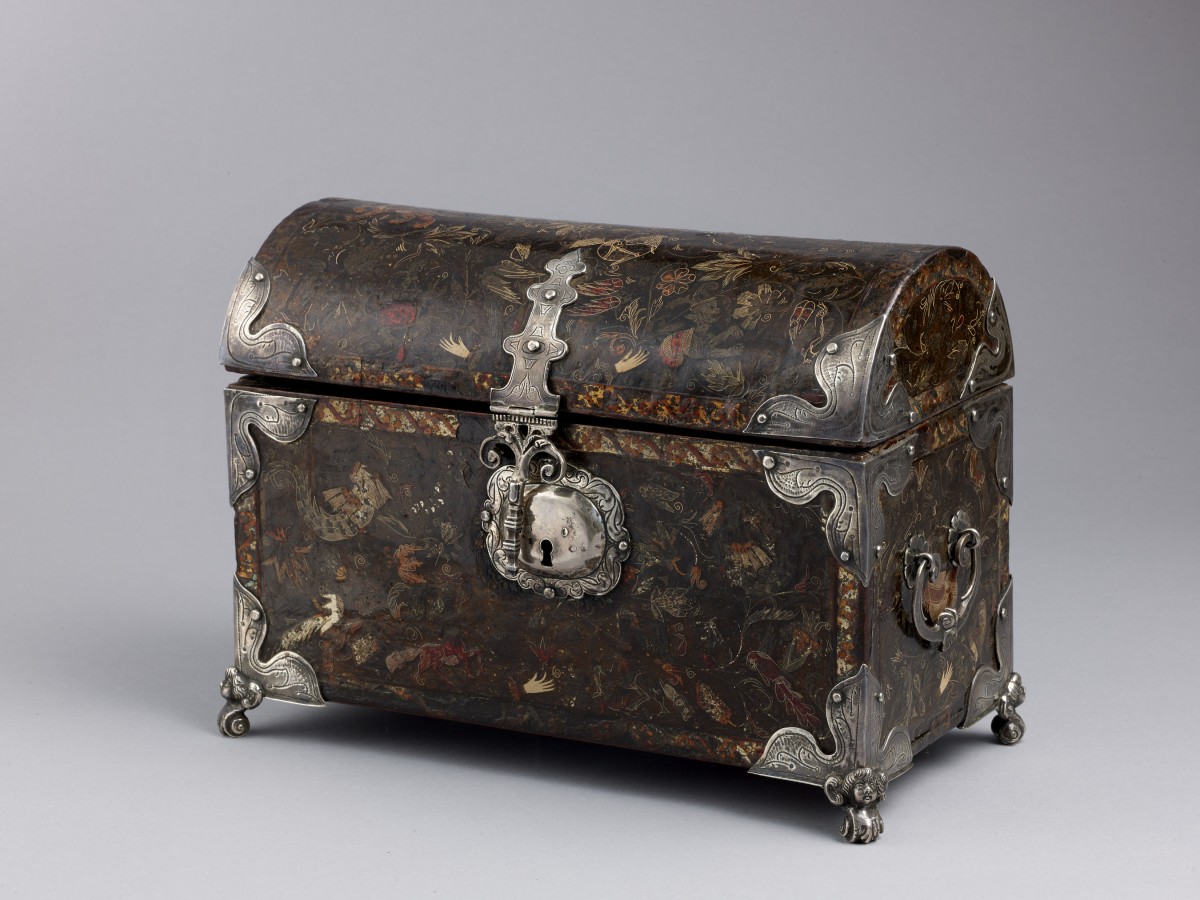Cross-cultural artistic exchange
Get to know some of the artworks featured in Faith and Fortune: Art Across the Global Spanish Empire – on now at the AGO.

Unknown. Tray (Batea), ca. 1650. Mexican lacquer on wood, H 8 cm x Diameter 56.5 cm. The Hispanic Society of America, New York, NY. LS1808. Photo © The Hispanic Society of America, New York.
Between 1492 and 1898, Spain established a vast empire that spanned both the Atlantic and Pacific Oceans. During that time, artists travelled extensively within the Americas and Southeast Asia, producing a rich and complex visual culture that transcended borders. Art, books and religious imagery were seen as powerful unifying tools which propelled artistic and material exchanges between different cultures. Featuring more than 200 artworks from the Philippines, Latin America and Spain, the AGO exhibition Faith and Fortune: Art Across the Global Spanish Empire dives into this moment in history and examines the cross-cultural movement of people, ideas and art forms across the two oceans.
Among the many themes explored in the exhibition, we turn our attention to the Galleon Trade Across the Pacific, a section that reveals artworks that hold a connection to the Manila Galleon Trade – a shipping route that connected colonial traders in Acapulco, Mexico and Manila, in the Philippines.
Beginning in 1565, Spanish merchant ships made annual trips from the Americas to Manila. They would carry precious gems and metals to Manila and return to Mexico with porcelain, spices and textiles from China. Religious sculptures and paintings were also popular trade goods. For the first time, Asia and the Americas had a system to sustain continuous trade. Affluent collectors in Spain and Latin America could accumulate Asian luxury goods. Widely admired by artists of Mexico, such treasures were reimagined and conceived into newly imported forms using local materials and techniques.
Here’s a peek of some artworks on view in Faith and Fortune: Art Across the Global Spanish Empire, on loan from the Hispanic Society of America, that tell the story of the Manila Galleon Trade.
Coffer (around 1650) by an artist once known from present-day Pasto, Colombia
For centuries, artists in Colombia, Mexico and Asia have produced exquisite lacquerware – clear, shiny and durable finishes made from a variety of trees, plants and insects. Taking inspiration from imported Asian art and reimagining them into their styles, the lacquerware of colonial Latin America was celebrated for its fusion of European subjects with Asian and Indigenous decorative forms. Coffer is an example of this cross-cultural exchange in art born out of exports and imports from the Manila Galleon Trade between Asia and the Americas.
Tray (Batea) (1650) by an artist once known from present-day Peribán, Michoacán, Mexico (Image at top)
A famous art form by lacquer artists of Mexico and Colombia was Bateas, large decorative trays that evolved from the dishes used to pan for gold in riverbeds. During the 17th century, many were produced for colonial patrons. Therefore, if you look closely at the exhibiting case of Bateas, you can spot traces of other cultural influences such as Indigenous, Greek and Spanish motifs as decorative art. In this tray, you can see a Greek goddess at the centre.
Faith and Fortune: Art Across the Global Spanish Empire is on view now at the AGO until October 10.
Signature Partner
Signature Partner
Generous Support
Generous Support
Supported by the Government of Canada/Avec l’appui du gouvernement du Canada
Supported by the Government of Canada/Avec l’appui du gouvernement du Canada


